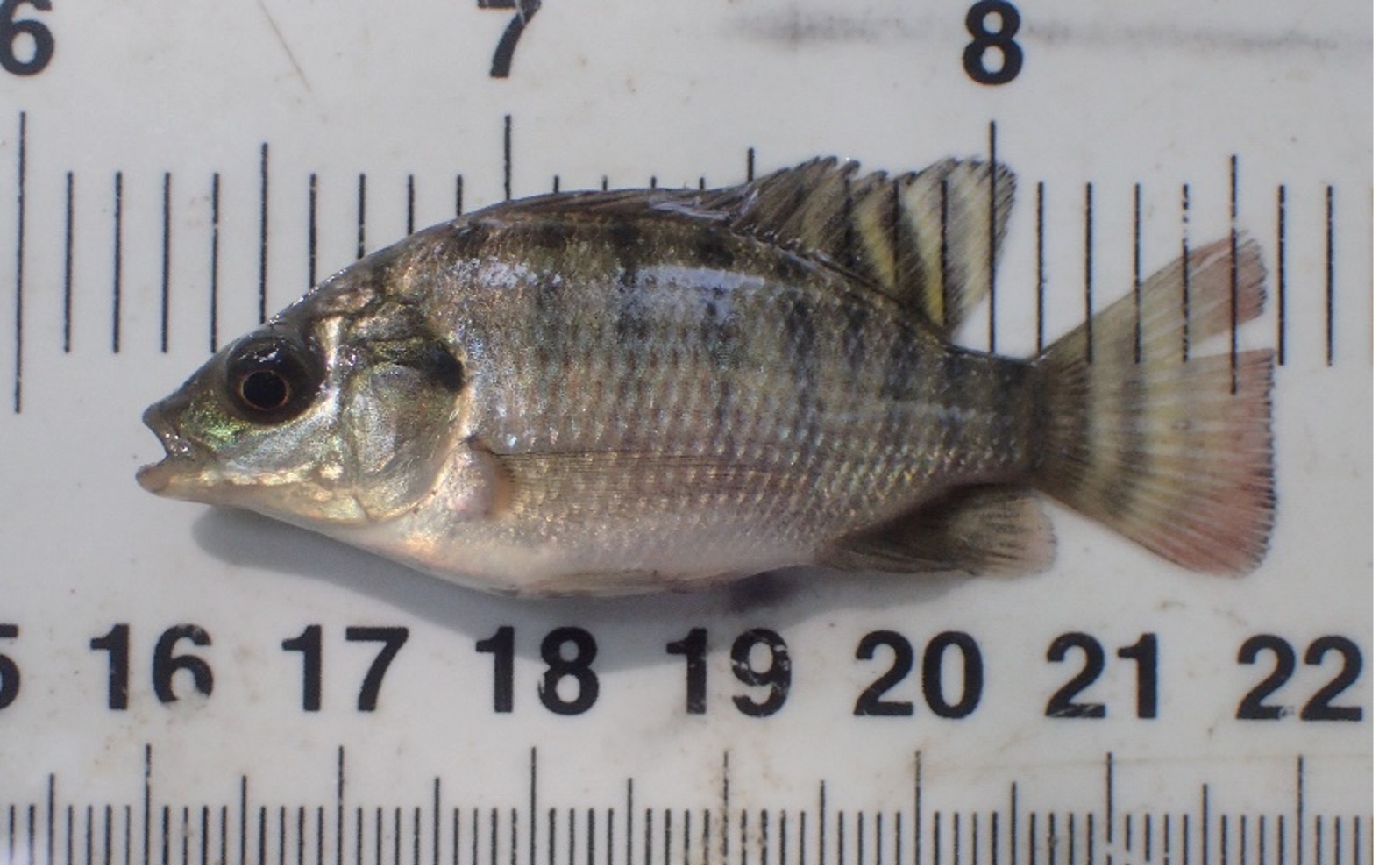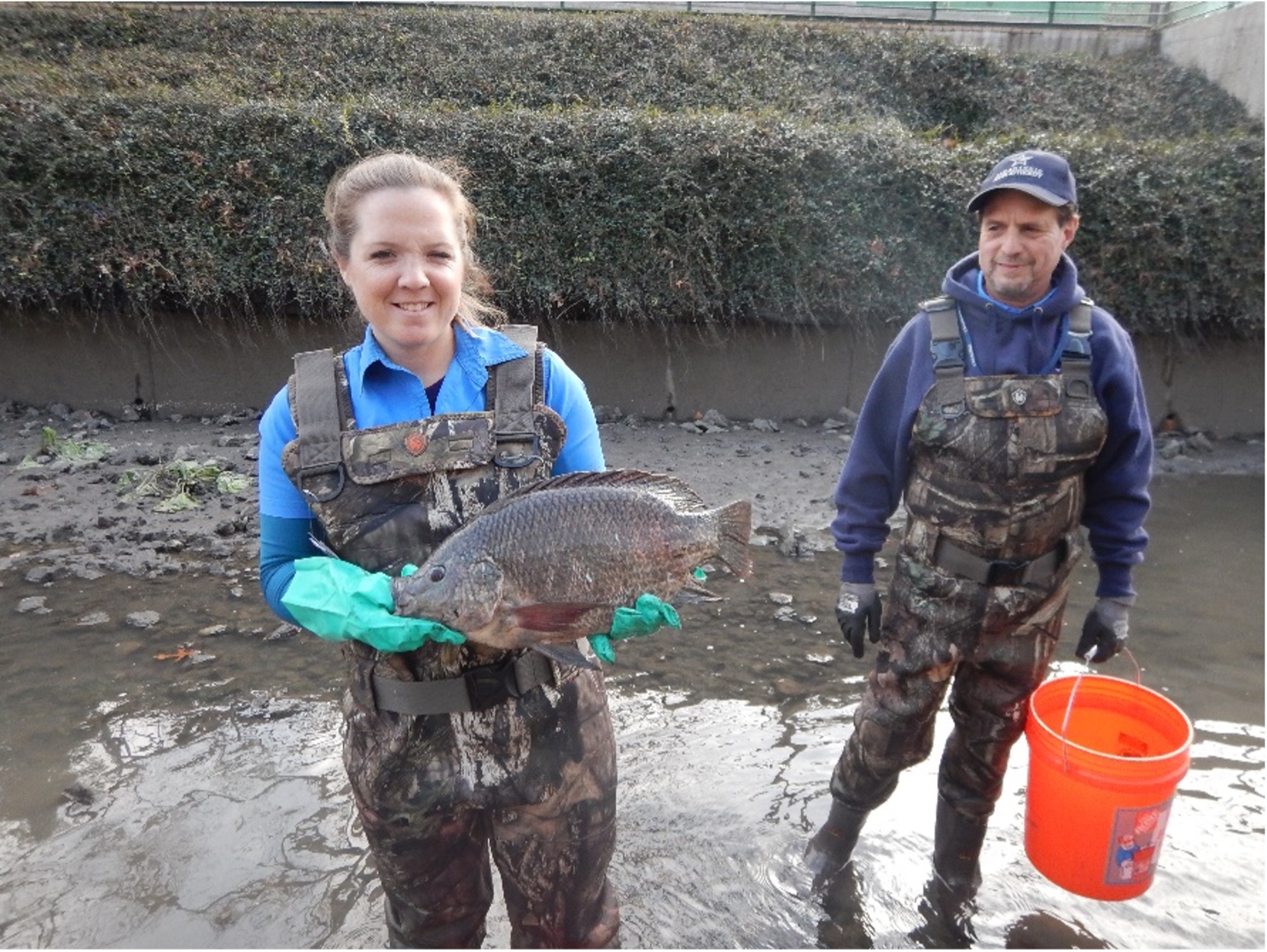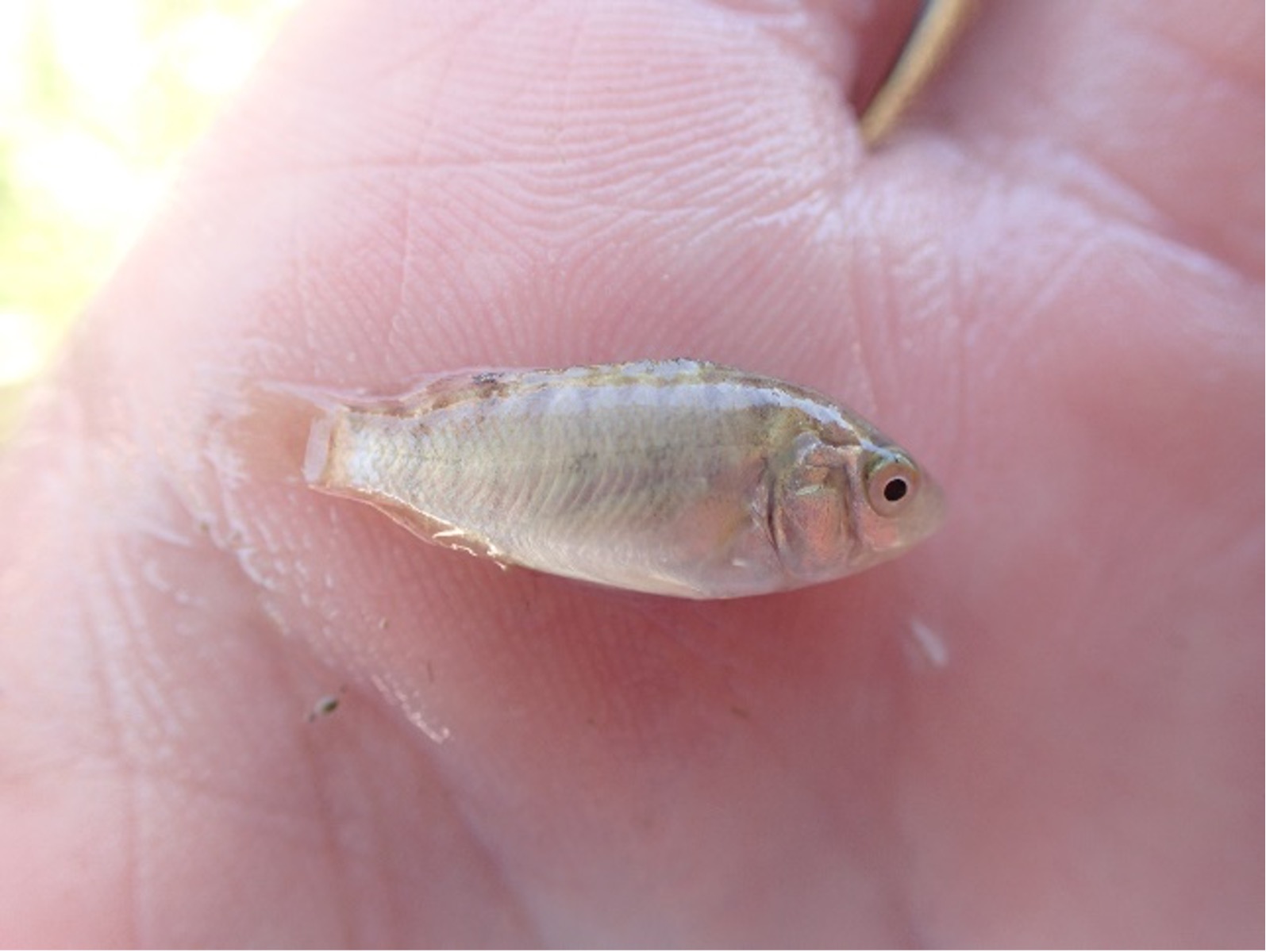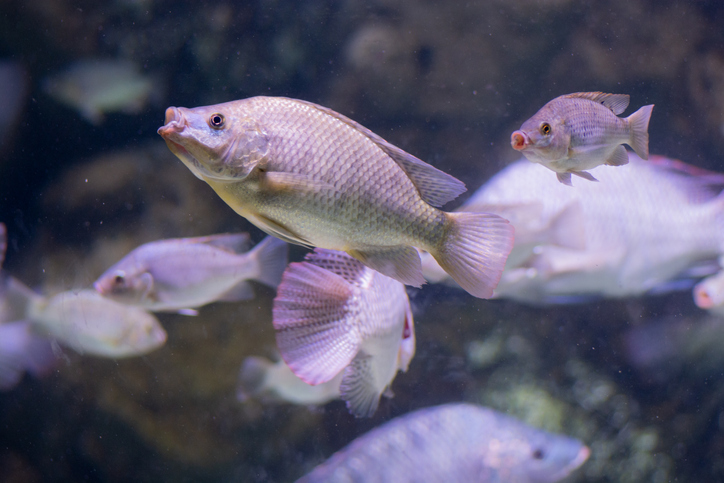Last Updated on October 12, 2023
You might know the tilapia best as a mild, white fish fillet wrapped in a corn tortilla with cabbage slaw or baked with garlic and butter. But did you know that these fish also harm our local creek and river ecosystems? Although these tasty fish are widespread in restaurants and aquaponics, they can pose huge threats when released into local waterways. In recent years, one species of tilapia, the blue tilapia (Oreochromis aureus), has been taking over freshwater lakes and rivers in the San Antonio River Basin. Let’s explore what makes the presence of this fish, well, fishy.
What is an invasive species?
This week we commemorate National Invasive Species Awareness Week, which seeks to increase public awareness about the dangers of invasive species. So, what exactly is an invasive species? Organisms that evolve in the same ecosystem participate in a system of checks and balances that keep their population numbers under control. This natural system prevents any one species from taking over. However, when non-native species are introduced to a new environment, they have no natural predators in that ecosystem. This dramatically increases their population size, leaving native organisms to suffer or even perish as they are outcompeted for resources like food and space. Therefore, non-native species that have detrimental effects on their new environment are called invasive species.
A warning sign about invasive species at a Texas lake. Photo courtesy Texas Parks and Wildlife Department © 2023.
In previous River Threats blogs, we looked at invasive species in the San Antonio River Watershed, like Giant apple snails, Plecostomus and Vermiculated sailfin catfish, and Zebra mussels. However, blue tilapia are also included on this list of invasive species that harm the native organisms and vegetation that keep our local underwater ecosystems healthy.
Why are tilapia an invasive species?
Blue tilapia are resilient, fast-growing, and voracious eaters, depleting the habitat and resources that native fish and freshwater mussels depend upon. Like many other “generalist” species, these fish don’t require a rich or diverse habitat to thrive. Therefore, they are well suited to more modified urban environments. They can eat a varied diet, consuming detritus, algae, vegetation, invertebrates and their larvae, smaller fish, and fish larvae. In addition, they are prolific breeders–having up to 1,200 eggs per spawn– and they breed year-round. This strategy is potent in nature. In this case, this strategy contributes to the detriment of local species. Blue tilapia also clear vast areas for their nests and know how to take up space. These reasons make it exceptionally easy for species like tilapia to take over. In some streams where blue tilapia are abundant, there is a change in the fish community and a decrease in the diversity and abundance of native species.

Blue tilapia are often found in modified urban environments, like the San Antonio River Walk.
How Do I identify blue tilapia?
Blue tilapia typically have grey-blue bodies with white bellies. During the breeding season, the head of the male tilapia will turn bright metallic blue with a red or pink band along the edge of the dorsal and tail fins. Female tilapia develop a pale orange color on the edges of their dorsal and tail fins. Tilapia can grow quite large—although they typically range from 5-8 inches in length and weigh 5-6lbs, they can grow up to 10 lbs.

Blue tilapia found by River Authority scientists during a biological survey.
Where can I find tilapia in the San Antonio River Basin?
Unfortunately for the River Basin, blue tilapia have been found in Calaveras Lake, Braunig Lake, and the San Antonio River. These fish are primarily freshwater but are quite resilient and hardy. Tilapia can survive and reproduce in brackish waters and tolerate high heat, low pH, and low dissolved oxygen environments. They can also handle various habitats, including warm ponds, lakes, streams, and among stones and vegetation, as well as open water. The tilapia’s resilience means it is significantly more common to find this fish in modified environments, like the San Antonio River Walk.

River Authority staff with a large blue tilapia.
How did tilapia get into the River Basin?
The native range of blue tilapia is limited to tropical and subtropical Africa and the Middle East. These fish were gradually introduced to Texas, the United States, and Internationally through various means. In Texas, many introductions of tilapia occurred in lakes used in the 1960s by power plant companies to cool their equipment. The temperatures in these lakes became too hot to support native fish, so they were stocked with the resilient tilapia as a sport fish. From these lakes, it is believed that fishermen unintentionally transported the tilapia throughout the state’s waterways. Today, tilapia are still abundant in these power plant cooling reservoirs and near wastewater outfalls, where the water is warmer.

A juvenile blue tilapia.
How can you help?
Just as these invasive species were introduced to new environments through people’s actions, it is only through a human intervention that we can reduce the impact of these non-native organisms on the San Antonio River!
The best way to help with the tilapia problem in our waterways is to catch and eat them! The Texas Parks and Wildlife Department (TPWD) asks anyone who reels in tilapia to kill or eat them instead of returning them to the water (Read the full rules here). So, grab your favorite seafood seasoning and eat up! Your belly and wallet will thank you.

Ready to catch your next meal? Join us for the upcoming Fin Addict Family, Friends & Fishing Clinic at Padre Park. At this free event, Fin Addict instructors and volunteers will educate youth on the basics of fishing through fun methods, and equipment is included.

Here are two more ways to help:
- Continue to educate yourself, and others about the threats non-native species pose to the San Antonio River ecosystem. Check out these blogs on Plecostomus and Giant apple snails as well as TPWD’s Texas Invasives website.
- Join the River Authority’s River Warriors volunteer crew and get trained to help in invasive species regulation efforts.
The San Antonio River Authority is proactive when it comes to protecting the natural resources of the San Antonio River Basin. The staff has worked hard to address invasive species as part of our commitment to safe, clean, and enjoyable creeks and rivers. Together we can help protect our waterways from these river threats!






